Building Healthy Posture from the Ground Up
*Note: Yoga should always be taught by a qualified and experienced yoga instructor. The intention of this article is to provide insight into the Voice Colors methodology for making yoga a successful and effective experience for our participants.
Billy is a 25 year-old man with an athletic build, good muscle tone and and a healthy spine. Like many adults in our chair-sitting culture, he has less than ideal posture. Billy presents with a combination of externally rotated feet, anterior pelvic tilt, protracted shoulders and forward head; a postural profile common in men and exacerbated by Billy’s tendency to hold muscle tension in his hips, neck and shoulders. Billy has GERD and esophagitis, causing him intermittent pain and discomfort: It is well documented that improving posture can help to minimize GERD symptoms. It is also likely that Billy has developed a defensive posture in response to physical discomfort, adding to the tension he holds in his upper body. Billy also presents with non-verbal autism and learns best with structure and visual supports.


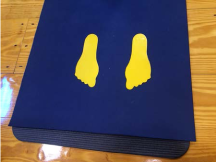
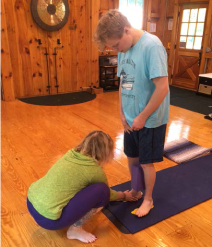
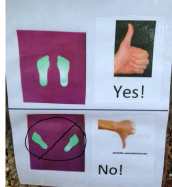 Prompting and fading prompts
Prompting and fading prompts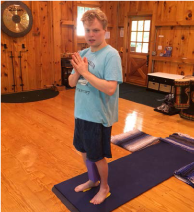 holding a block
holding a block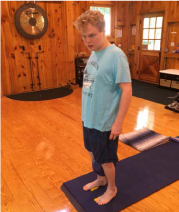 holding a Fitball
holding a Fitball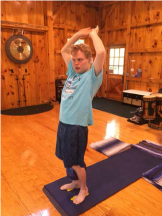 reaching
reaching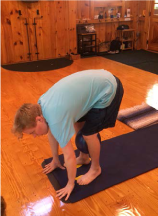 bending
bending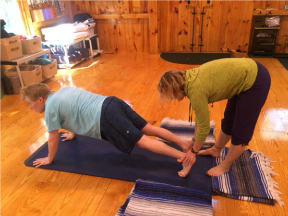
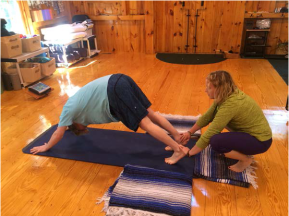 downward dog pose
downward dog pose